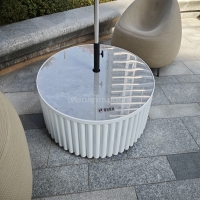Welcome to the website for landscape facilities products and knowledge.
What are the key differences between open-air and ventilated landscape pet waste bins?
When it comes to managing pet waste in outdoor spaces, choosing the right bin is crucial. Open-air and ventilated landscape pet waste bins serve the same purpose but differ significantly in design and functionality.
Open-Air Pet Waste Bins
These bins are simple, uncovered containers designed for easy access. They are cost-effective and ideal for low-traffic areas. However, they lack odor control, attracting pests and emitting unpleasant smells, especially in warm weather. Maintenance requires frequent emptying to prevent overflow and hygiene issues.
Ventilated Pet Waste Bins
Ventilated bins feature airflow systems or perforated designs to reduce odor and bacterial growth. They are more hygienic and suitable for high-traffic parks or residential areas. The ventilation slows decomposition, minimizing foul odors. While pricier, they offer long-term benefits like reduced maintenance and improved aesthetics.
Key Differences
1. Odor Control: Ventilated bins excel in trapping smells, while open-air bins do not.
2. Pest Resistance: Ventilated designs deter pests better due to enclosed structures.
3. Maintenance: Open-air bins need more frequent cleaning, whereas ventilated bins require less attention.
4. Cost: Open-air bins are cheaper upfront, but ventilated bins save costs over time.
For pet owners and landscapers, selecting the right bin depends on location, budget, and desired hygiene levels. Ventilated bins are the superior choice for busy areas, while open-air options work well for private, low-use spaces.
Related search:

Recommendation
Round metal tube border design table with tempered glass or granite countertop on the top.